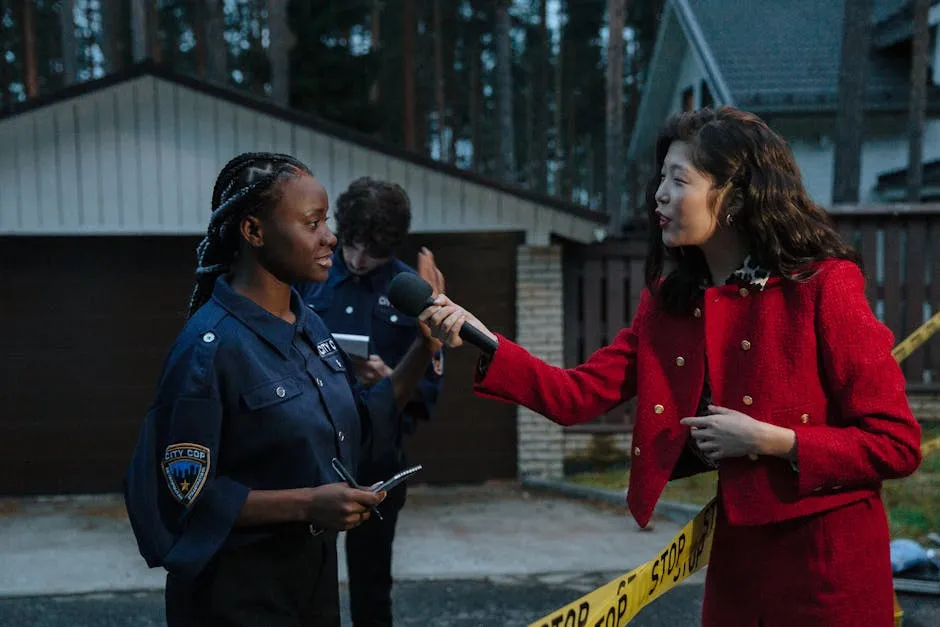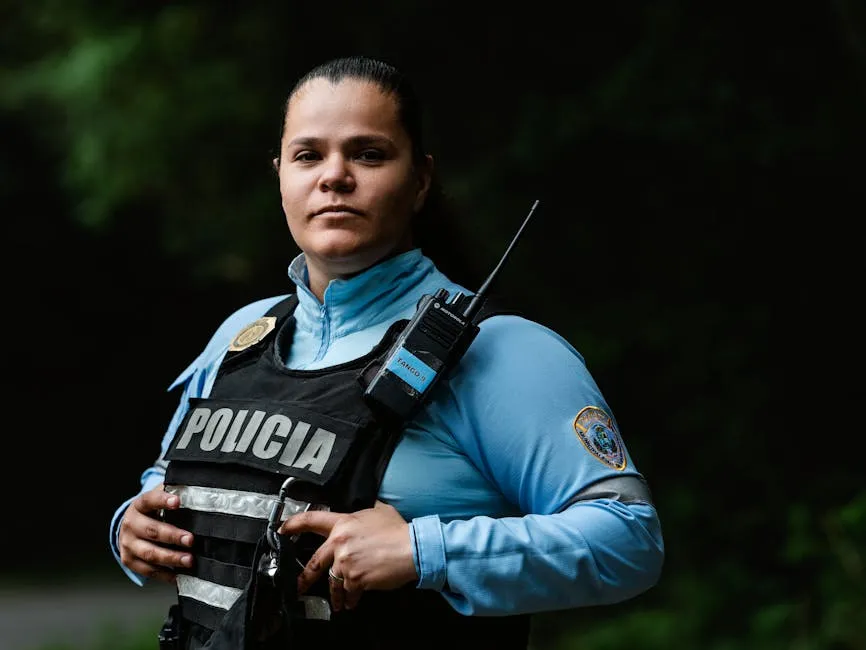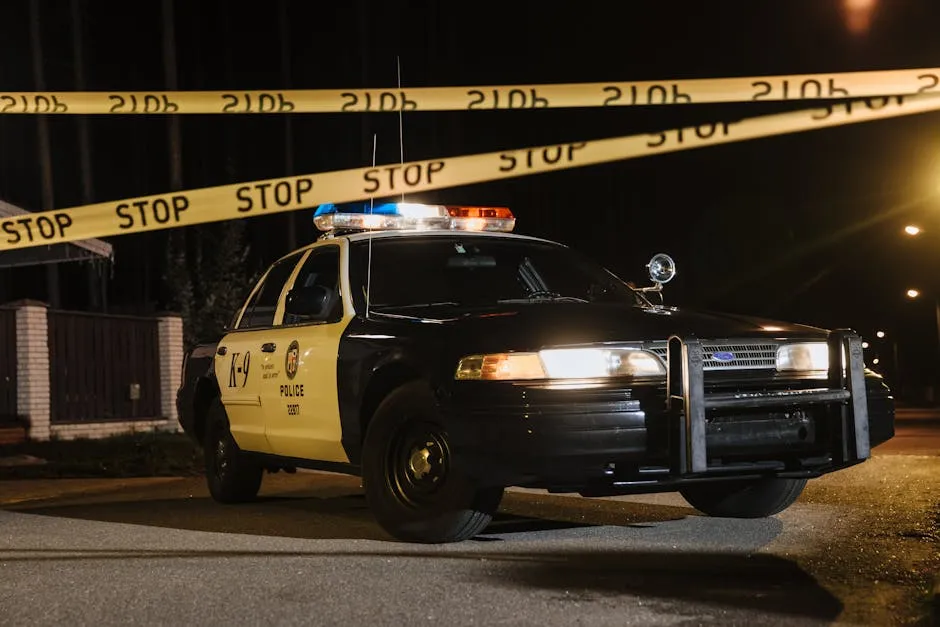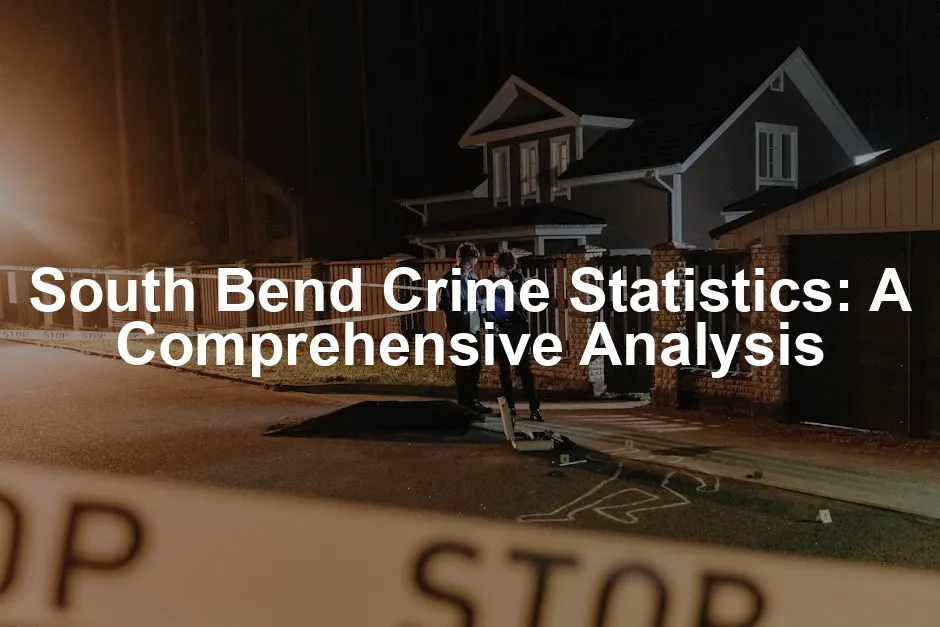Introduction
Nestled in the heart of Indiana, South Bend is a city with a rich history and vibrant community. Known primarily for being home to the University of Notre Dame, it boasts a blend of cultural and recreational offerings. However, like many urban areas, South Bend faces challenges related to crime that can affect its residents and attract potential movers.
Understanding crime statistics is essential for everyone. For residents, it informs daily safety practices. For those considering relocation, it provides insight into community dynamics. City officials utilize these statistics to implement effective policies and allocate resources.
This article aims to provide a thorough analysis of South Bend’s crime statistics, trends, and community perceptions surrounding safety. By examining the data, we can uncover patterns and gain a deeper understanding of the local environment. Key sources for this analysis include the FBI’s uniform crime reports, local law enforcement agencies, and community feedback.
Armed with this knowledge, residents and prospective residents can make informed decisions about their safety and community engagement. Let’s dive into the intricacies of South Bend’s crime landscape and see what the numbers reveal.

Understanding Crime Statistics
What Are Crime Statistics?
Crime statistics are numerical data that represent the frequency and types of crimes reported in a specific area. They are crucial for understanding crime trends and assessing public safety. These statistics help identify patterns, gauge the effectiveness of law enforcement, and inform community initiatives.
In the United States, crime data is collected through various mechanisms. Primarily, the FBI compiles this information via the Uniform Crime Reporting (UCR) Program, which gathers data from over 18,000 law enforcement agencies. These agencies report incidents of crimes, categorized into two main groups: violent crimes and property crimes.
Violent crimes include offenses such as murder, rape, robbery, and aggravated assault. These crimes involve force or the threat of force and often evoke significant public concern. On the other hand, property crimes encompass burglary, larceny, motor vehicle theft, and arson. These crimes typically involve the unlawful taking of property without direct harm to individuals.
Understanding these distinctions is vital for interpreting crime statistics accurately. For residents and city officials, this data not only reflects the current safety climate but also helps shape future strategies for crime prevention and community safety initiatives. In South Bend, as in other cities, these statistics serve as a foundation for discussions about safety, quality of life, and community trust in law enforcement.
If you’re looking to dive deeper into the psychology behind criminal behavior, consider checking out The Psychology of Criminal Behavior by David A. Crighton. It provides insights that can help us understand the motivations behind crime.

Types of Crimes
Violent Crimes
Violent crimes are serious offenses that involve force or the threat of force. They create fear and insecurity within communities. In South Bend, the primary types of violent crimes include:
- Murder: The unlawful killing of a person. It’s the most severe crime, leaving a lasting impact on families and communities.
- Rape: This heinous act violates personal safety and autonomy. It’s critical for survivors to have access to support services.
- Robbery: Taking property from someone through the use of force or intimidation. It’s not just about the loss of items but also the trauma inflicted.
- Aggravated Assault: This involves causing serious bodily injury or using a weapon. It can lead to long-term physical and emotional repercussions.
Property Crimes
Property crimes involve the theft of property without direct harm to individuals. These crimes can disrupt community trust and safety. Key examples include:
- Burglary: Entering a building without permission with the intent to commit a crime. It’s a violation of personal space that can leave victims feeling vulnerable.
- Theft: This encompasses a wide range of acts, including shoplifting and pickpocketing. It can affect local businesses and community morale.
- Motor Vehicle Theft: South Bend has seen a notable rise in car thefts, making it a concern for residents. Preventative measures like locking doors and parking in well-lit areas are essential.
To protect your property effectively, consider investing in a Home Security System. Having a reliable security system not only deters criminals but also provides peace of mind for you and your family.

Crime Rate Metrics
Calculating crime rates involves determining the number of incidents per 1,000 residents. This method allows for a standardized comparison across different locations and times. For instance, if South Bend has a violent crime rate of 14.75 per 1,000 residents, it means that for every 1,000 people living in the city, about 15 experience violent crime annually.
However, there’s a distinction between reported crimes and actual crime rates. Not all crimes get reported, leading to discrepancies in statistics. Many incidents go unreported due to various reasons, such as fear of retaliation or distrust in law enforcement. Understanding this gap is crucial for grasping the true state of safety in South Bend.

South Bend Crime Overview
General Crime Statistics
Currently, South Bend faces significant crime challenges. The overall crime rate stands at approximately 46.15 per 1,000 residents, which is notably higher than both state and national averages. Specifically, the violent crime rate is 14.75, while property crimes are reported at 31.40 per 1,000 residents.
To put this in perspective, the state of Indiana averages lower rates, with the national average for violent crime being around 22.7. This places South Bend in a concerning position, as residents have a 1 in 36 chance of becoming a victim of crime. Comparatively, the violent crime rate in South Bend is far above the national average, making the safety narrative even more complex for residents and potential movers alike. For more insights on crime statistics, you can check a comprehensive analysis of safety in 2023 here.

For those interested in understanding crime from a psychological perspective, The Anatomy of Violence: The Biological Roots of Crime by Adrian Raine is a fascinating read that delves into the science behind criminal behavior.
Understanding crime statistics is vital for assessing safety in South Bend. Check out this comprehensive analysis of safety in 2023 for more insights.
Understanding these statistics helps paint a clearer picture of community safety and highlights the need for continued efforts in crime prevention and community engagement.

Historical Trends
Crime in South Bend, Indiana has seen many ups and downs from 1999 to 2022. The overall crime rate has fluctuated significantly, much like a roller coaster ride. For example, in 2016, the violent crime rate peaked at a staggering 1,020.5 incidents per 100,000 people, a worrying 43.49% increase from the previous year. However, by 2018, it had dipped to 1,039.1, indicating some progress in combating violent crime.
Property crime also paints an interesting picture. In 2005, property crime rates were around 7,000 incidents per 100,000 residents. Fast forward to 2022, and the numbers suggest a decrease, but South Bend still grapples with high property crime rates compared to national averages.

Notable increases in specific crime categories, such as motor vehicle theft, have been alarming. Residents have reported that vehicle theft often feels like an unfortunate local pastime. Anecdotal evidence suggests that many feel cautious when leaving their cars unattended, especially in certain neighborhoods.
Conversely, there has been a decline in serious violent crimes like murder, which has dropped from highs seen in the early 2000s. The overall trend suggests that while some crimes have seen a resurgence, particularly property crimes, community efforts and police initiatives have made strides in reducing the most severe violent offenses.
Neighborhood Crime Rates
When it comes to crime rates in key neighborhoods like Keller Park and River Park, the picture becomes more nuanced. Keller Park has garnered a reputation as a rough patch in South Bend. Residents often express concerns about safety, noting that the neighborhood can feel sketchy, particularly at night.

On the flip side, River Park tends to evoke a different sentiment. A resident shared that while there are some questionable streets, overall, it remains a quiet area. Comments from locals reveal a mixed bag of perceptions. Some residents feel safe, enjoying the community vibe, while others remain vigilant due to the occasional crime reports.
Community feedback plays a crucial role in shaping perceptions of safety. Many residents emphasize simple precautions like locking doors and being aware of their surroundings. They believe that as long as one avoids questionable areas and doesn’t tempt fate, they’re likely to enjoy their experience in South Bend without major issues.

For those looking to enhance their personal safety, consider a Personal Safety Alarm Keychain. This small device can provide an added layer of security and peace of mind when you’re out and about.
In summary, crime rates vary significantly across neighborhoods, creating a diverse landscape of safety. While Keller Park may raise eyebrows, River Park offers a more relaxed vibe. Understanding these neighborhood dynamics is essential for current and prospective residents as they navigate their safety and well-being in South Bend.

Rape
In South Bend, the rape rate stands at 76.4 per 100,000 residents, which is notably higher than the national average of 40.7. This statistic highlights a serious concern for the community. It’s essential for residents to understand these numbers and the implications they have for safety.
Fortunately, South Bend offers various victim support services. Organizations like the YWCA and Family Justice Center provide crucial help. They offer counseling, legal advocacy, and shelter for survivors. These resources aim to empower victims and assist them in navigating their healing journey.

Robbery and Assault
Robbery and aggravated assault statistics in South Bend paint a concerning picture. The robbery rate is 233.1 per 100,000, while aggravated assault is alarmingly high at 1,391.5 per 100,000. This is significantly above the national averages, indicating that these types of violent crimes are prevalent.
In response, community initiatives aim to reduce these crimes. Programs like Neighborhood Watch and the South Bend Police Department’s community policing efforts are stepping up. These initiatives foster collaboration between residents and law enforcement, focusing on building trust and enhancing safety. Residents are encouraged to participate actively, as community involvement can lead to a more secure environment.

Property Crime Analysis
Burglary
Burglary trends in South Bend show a persistent challenge for residents. With a rate of 645.3 per 100,000, it’s higher than the national average of 500.1. This spike in burglary can greatly impact neighborhood morale and security. Residents often express feelings of vulnerability, urging for more robust prevention measures.

Theft and Motor Vehicle Theft
Motor vehicle theft is particularly high in South Bend, with rates around 559.2 per 100,000, exceeding the national average of 284. This alarming trend leads to increased insurance premiums and anxiety among car owners. Prevention measures are essential. Residents are advised to park in well-lit areas, always lock their car doors, and avoid leaving valuables in plain sight.

Community Perception and Safety
Resident Feelings About Safety
A recent survey reveals a mixed sentiment about safety among South Bend residents. About 49% feel “pretty safe,” while 25% indicate they feel “somewhat safe.” However, 14% of residents express feeling “not safe” at all. This diversity of opinions reflects the complex nature of crime perception, influenced by personal experiences and neighborhood dynamics.
Residents often share anecdotes about their safety experiences. Many emphasize that locking doors and staying aware of surroundings can significantly reduce risks. While some neighborhoods, like Keller Park, tend to have a rougher reputation, others like River Park offer a quieter atmosphere.

Community discussions highlight that safety concerns often stem from isolated incidents rather than a consistent state of danger. This understanding can lead to a more nuanced view of safety in South Bend, encouraging collaboration between residents and law enforcement to foster a sense of security.
In summary, while crime statistics present a daunting picture, community initiatives and proactive measures can help residents feel safer and more engaged. Implementing these strategies can significantly enhance the overall safety climate in South Bend.
Law Enforcement’s Role
The South Bend Police Department (SBPD) plays a vital role in maintaining community safety. Their initiatives focus on crime reduction and fostering trust with residents. One notable effort is the SB Stat program, which leverages data to enhance police performance and accountability. Through this initiative, the department tracks crime trends and allocates resources effectively.
Community policing is at the heart of SBPD’s strategy. Officers engage with neighborhoods, attending local meetings and events. This approach allows them to understand residents’ concerns better. It’s not just about issuing tickets; it’s about building relationships. When officers are familiar faces in the community, it fosters a sense of safety and cooperation.
The department also encourages residents to participate in safety programs. Neighborhood watch groups are gaining popularity. These groups empower citizens to be proactive, creating a united front against crime. By working together, residents and law enforcement can develop tailored solutions to local issues, enhancing overall safety.
Safety Tips for Residents
Staying safe in South Bend is a shared responsibility. Here are some practical tips every resident should consider:
- Lock Your Doors: Always secure your home and vehicle. A locked door is your first line of defense.
- Stay Aware: Be vigilant about your surroundings. If something feels off, trust your instincts.
- Avoid Risky Areas: Some neighborhoods have higher crime rates. Stay informed about local crime trends and avoid these areas, especially at night.
- Use Well-Lit Areas: When out at night, stick to well-lit streets. This simple action can deter potential criminals.
- Engage in Community Programs: Participate in local safety initiatives. Join neighborhood watch programs to strengthen community ties.
Resources for crime prevention are available. The South Bend Police Department offers workshops on personal safety and crime prevention strategies. Additionally, local organizations provide support services for victims of crime, ensuring help is accessible to those in need. Don’t forget to check out a First Aid Kit to ensure you’re prepared for emergencies!
Conclusion
In summary, understanding crime statistics in South Bend is crucial for residents and potential movers. The city faces significant challenges, with a crime rate of approximately 46.15 per 1,000 residents. Violent crimes, including assault and robbery, contribute to a heightened sense of insecurity. However, the community is resilient, and efforts by the South Bend Police Department are vital in addressing these issues.
Community engagement plays a pivotal role in combating crime. When residents work together with law enforcement, it creates a safer environment for everyone. Programs like neighborhood watch initiatives empower citizens to take an active stance against crime. By fostering relationships between residents and police, trust can be built, and safety can be enhanced.
Residents are encouraged to familiarize themselves with local crime data and participate in safety programs. Reporting suspicious activities helps law enforcement respond effectively. Everyone has a role to play in creating a secure community. Together, we can make South Bend a safer place to live and thrive.
FAQs
What is the overall crime rate in South Bend, Indiana?
The overall crime rate in South Bend stands at approximately 46.15 per 1,000 residents. This figure indicates a significant level of crime compared to both state and national averages.
How does South Bend compare to other cities in Indiana?
South Bend’s crime rates are notably higher than those of many other Indiana cities. For instance, cities like Fort Wayne and Indianapolis have lower violent crime rates, making South Bend one of the more concerning areas in terms of safety.
What neighborhoods in South Bend are considered safe?
Neighborhoods such as River Park and Johnson Road/Main Street generally report lower crime rates. While no area is completely devoid of crime, these neighborhoods tend to have a more secure atmosphere, according to resident feedback.
What resources are available for victims of crime in South Bend?
Victims of crime in South Bend can access various support services, including the YWCA and Family Justice Center. These organizations provide counseling, legal assistance, and shelter to ensure victims receive comprehensive support during difficult times.
How can residents get involved in crime prevention efforts?
Residents can engage with local law enforcement by joining neighborhood watch programs, attending community meetings, and utilizing social media platforms to share information. Active participation fosters a collaborative approach to crime prevention and enhances overall community safety.
Please let us know what you think about our content by leaving a comment down below!
Thank you for reading till here 🙂
All images from Pexels




